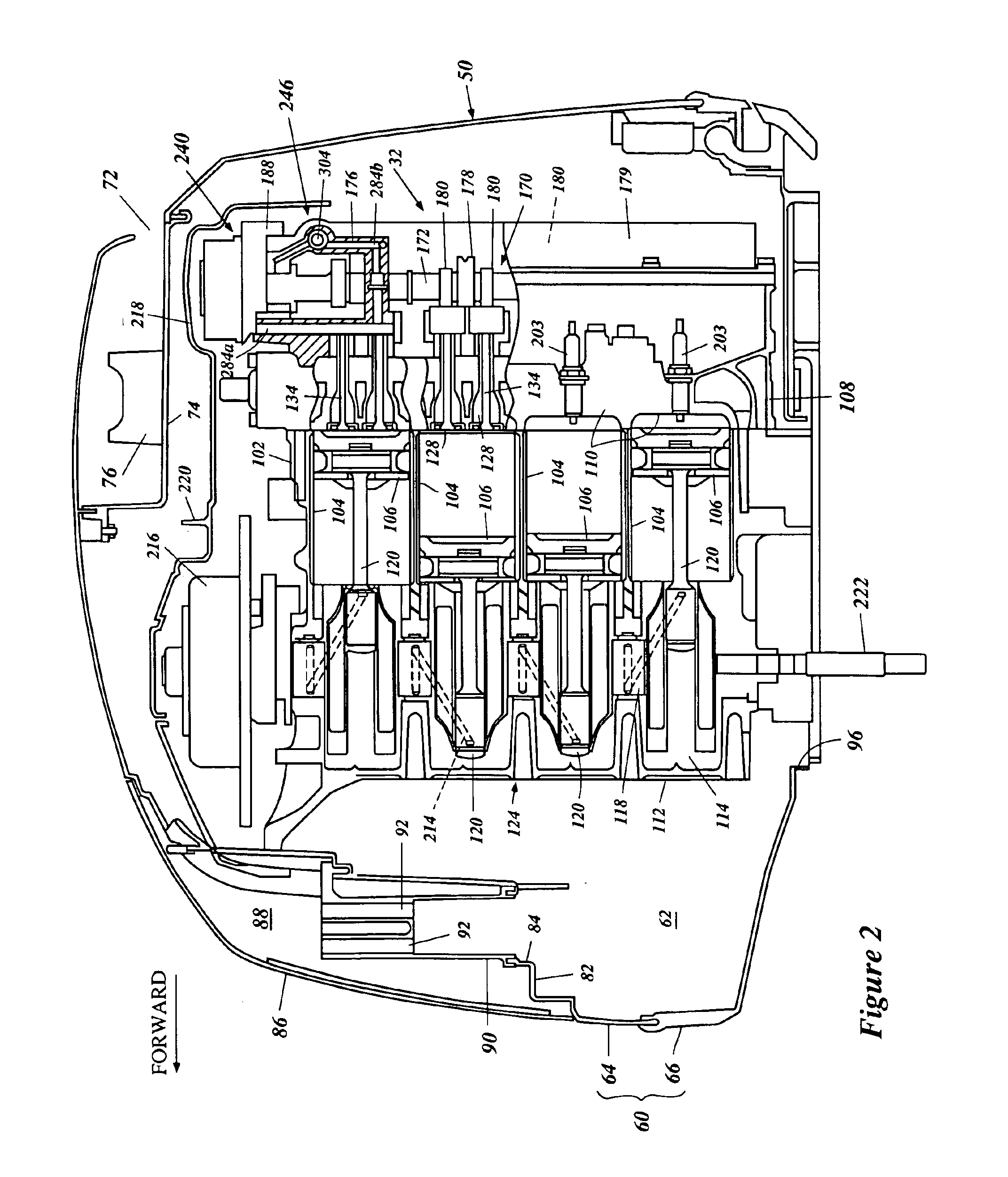Valve timing control for marine engine
a valve timing and marine technology, applied in marine propulsion, electrical control, vessel construction, etc., can solve the problems of affecting the performance of the engine, generating delay, and reacting slower to the valve timing mechanism, so as to achieve accurate follow-up commands, reduce the viscosity, and reduce the effect of delay
- Summary
- Abstract
- Description
- Claims
- Application Information
AI Technical Summary
Benefits of technology
Problems solved by technology
Method used
Image
Examples
Embodiment Construction
[0028]With reference to FIGS. 1-5, an overall construction of an outboard motor 30 that employs an internal combustion engine 32 configured in accordance with certain features, aspects and advantages of the present invention is described below. The engine 32 has particular utility in the context of a marine drive, such as the outboard motor, and thus is described in the context of an outboard motor. The engine 32, however, can be used with other types of marine drives (i.e., inboard motors, inboard / outboard motors, etc.) and also certain land vehicles. Furthermore, the engine 32 can be used as a stationary engine for some applications that will become apparent to those of ordinary skill in the art.
[0029]In the illustrated arrangement, the outboard motor 30 generally comprises a drive unit 34 and a bracket assembly 36. The bracket assembly 36 supports the drive unit 34 on a transom 38 of an associated watercraft 40 and places a marine propulsion device 41 in a submerged position with...
PUM
 Login to View More
Login to View More Abstract
Description
Claims
Application Information
 Login to View More
Login to View More - R&D
- Intellectual Property
- Life Sciences
- Materials
- Tech Scout
- Unparalleled Data Quality
- Higher Quality Content
- 60% Fewer Hallucinations
Browse by: Latest US Patents, China's latest patents, Technical Efficacy Thesaurus, Application Domain, Technology Topic, Popular Technical Reports.
© 2025 PatSnap. All rights reserved.Legal|Privacy policy|Modern Slavery Act Transparency Statement|Sitemap|About US| Contact US: help@patsnap.com



